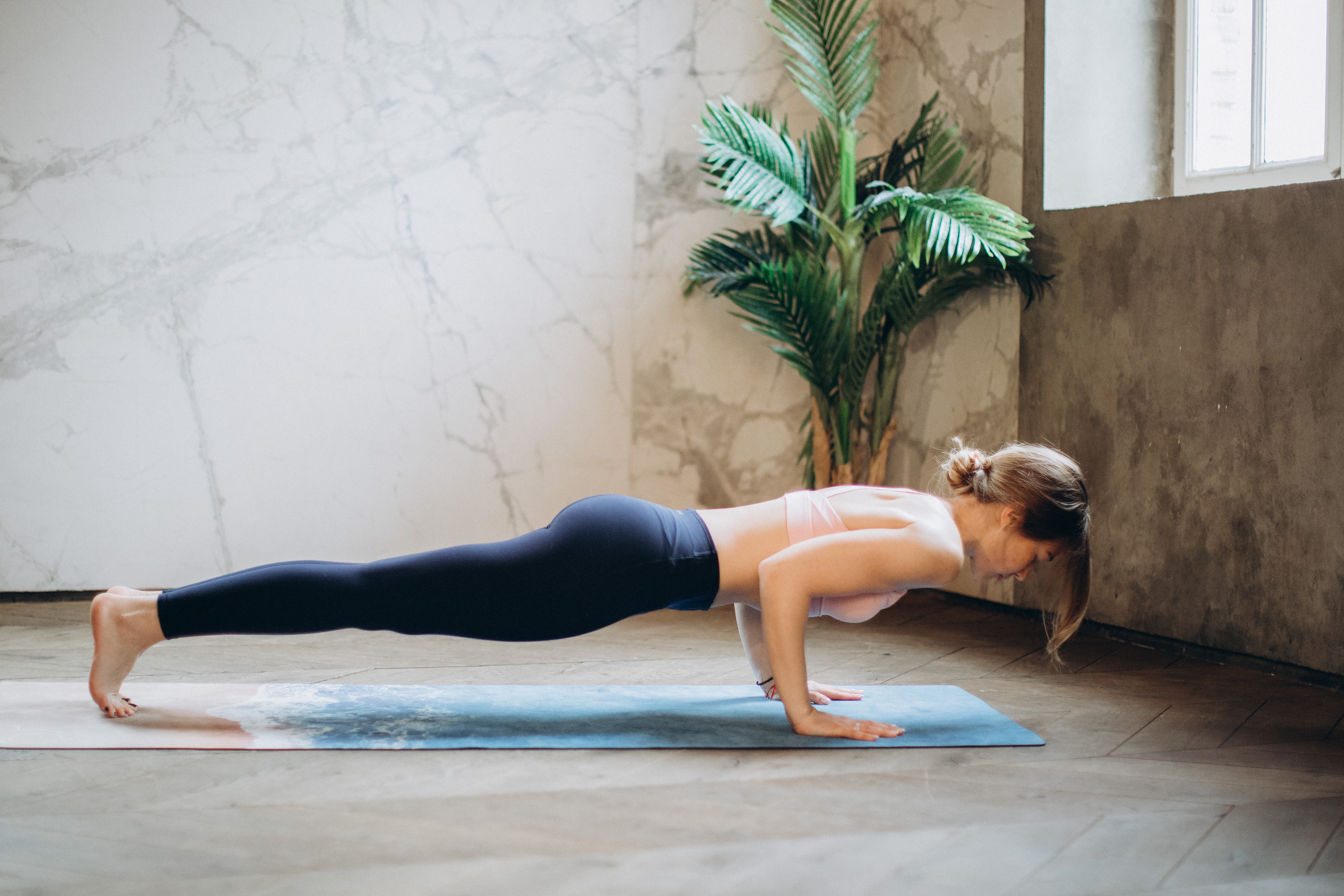There are so many benefits of incorporating movement into your daily routine. When choosing the right type of movement that also aligns with your health goals, be mindful of physical injuries, medical conditions, stress levels, and how you feel after a period of exercise (i.e., good vs. exhausted). If you don’t have a health goal in mind and just want to move your body for overall health and wellness, choose something that you enjoy and you’ll easily and consistently do. It’s more important that your movement be consistent; daily movement is always better than occasional movement once a week.
For those who are feeling stressed with low energy/low cortisol, choose something that has less intensity and avoid things like high-intensity interval training (HIIT). If you are stressed, but need movement as a form of releasing that stress and are high energy/high cortisol, trying HIIT may be an option; however, discontinue it if you feel worse afterwards.
While there are many different forms of movement, I’ll cover the most common ones to give you an idea of what kind of movement can be incorporated, and who it’s best suited for.
Benefits of Daily Movement
- Strength
- Endurance
- Flexibility
- Repair
- Injury recovery/prevention
- Pain reduction (by releasing endorphins)
- Cardiovascular health
- Nervous system regulation (also helpful for reducing stress and increasing relaxation)
- Immune system support
- Metabolism support
- Endocrine system support
- Weight management
- Prevention of chronic disease or illness
- Inflammation reduction
- and so much more
NEAT
This stands for non-exercise activity thermogenesis. It is an activity that is accessible to every body type, regardless of what shape or size you are. It refers to any movement you incorporate throughout the day and has nothing to do with specific exercises or a workout. This includes walking, gardening, chores, hobbies, and basic bodily functions such as breathing or small movements. But the more active you are throughout the day, the better it is for your health, so increasing your NEAT is a good idea. Most people can aim for 7,500 steps a day, which is sufficient if you are able to walk. This is the easiest way to add movement to your day without specifically doing any exercise. If you are able to do exercise, I recommend cardio, strength and resistance training, joint mobility, and stretching on top of increasing your NEAT.
Cardio
There are different types of cardio workouts you can do to get your blood and lymph system circulating and to strengthen the heart and lungs. Movement can be slow (such as walking), fast (such as running), or any speed in between. HIIT, Pilates, Zumba, or other dance workouts are all great forms of cardio. Incorporating a cardio workout into your routine can reduce overall inflammation and water retention.
TIP: You lose a lot of water weight from sweating when doing cardio, which means you also lose a lot of electrolytes; be sure to replace some of the essentials, like salt and magnesium, in your diet. Drinking coconut water with a pinch of salt after a cardio workout is my favourite natural way to replenish electrolytes.
Strength and Resistance Training
Weights or bodyweight exercises, as well as other forms of strength and resistance training, are great for reducing body fat, improving metabolism, lowering insulin resistance, improving bone strength (great for arthritis), and building strength and muscle. An overall increase in muscle mass is protective and also has immune system benefits. In my opinion, this is one of the best types of movement for overall health and wellness, chronic pain, chronic disease prevention, rehabilitation post-injury, and weight management. Because of the health benefits it can provide, I believe everyone should be incorporating it into their daily routine, even if it’s just for a few minutes. Specific training recommendations for individuals should be evaluated based on their health concerns, so see your chiropractor to get assessed and have a treatment plan recommended for you based on your goals. TIP: Slow and controlled movements are best for stability and endurance, as well as reducing body fat.
If you’ve been feeling pain in an area for more than three months, you may need to include some strengthening exercises to your daily routine. Some examples are planks, squats, deadlifts, and lunges. If bodyweight exercises are too easy or not easily accessible, resistance bands or small weights can be added.

Joint Mobility
These exercises increase mobility and improve the motion of joints through ligaments by using slow and controlled movements combined with strengthening exercises. The purpose of these types of exercises is to target the full range of motion of all joints, since we don’t use the full range in our everyday activities. Over time, repetitive movements can stiffen up joints, causing a reduction of mobility and range of motion—this can lead to muscle tightness, weakness, and pain, so performing joint mobility exercises is important. People with ligament injuries or ligament laxity should be careful when doing these types of exercises, so consult with your chiropractor. Not only do these types of exercises have immediate effects, but overall, they can improve your workouts and help with strength training. They’re also great for injury prevention, rehabilitation, and reducing joint pain. An example of a joint mobility exercise is the cat-cow pose in yoga. This particularly targets flexion and extension in the spinal joints.
Stretching
This can provide you with a feeling of “loose muscles,” but these results are only temporary because no changes actually take place within the muscle itself. The tight sensation you feel is more likely joint stiffness or muscles that have become weakened over time, rather than muscle tightness. Before exercise, stretching can deliver some immediate pain relief and make exercises more comfortable to perform. During stretching, hold poses for two minutes—like in yin yoga—for longer lasting results. Generally, stretching affects the nervous system more than the muscles themselves. It helps to move you from a stressed-out sympathetic state, where you might be feeling more tense, into a relaxed parasympathetic state.
Joint mobility can also benefit from stretching, provided there’s proper form while completing the stretch and you hold it long enough. Combining stretches with strengthening exercises may also help increase flexibility and prevent future injury. Again, yoga is a great way to incorporate stretching with movement (e.g., child’s pose).
In daily life, many of us stand or sit in the same position for long periods of time; stretching can be a great way to incorporate movement throughout the day. Muscles can tighten up after less than 30 minutes of sedentary activity. Therefore, I’d recommend stretching for 30 seconds—or at the very least, changing positions—every 15–20 minutes.
I always recommend varying the types of movement you do whenever possible for best results, but try to stay consistent so that you’re moving your body every single day. When starting any new exercise routine, it’s always a good idea to consult your doctor first. Be aware that you may experience soreness after trying something new, but you shouldn’t experience pain during exercises or stretches. Always work in a pain-free range when doing exercises unsupervised, and consult your chiropractor if you are experiencing pain during any exercise.
Be sure to book an appointment with your chiropractor to get personalized treatment plans for your health goals and to make sure that you’re doing movements best suited for you.
You May Also Like: How to Fit Exercise into a Busy Parent Schedule, Making a Move: How Exercise Benefits the Body & Brain, 5 Postnatal Exercise Tips Every New Mother Should Know.









